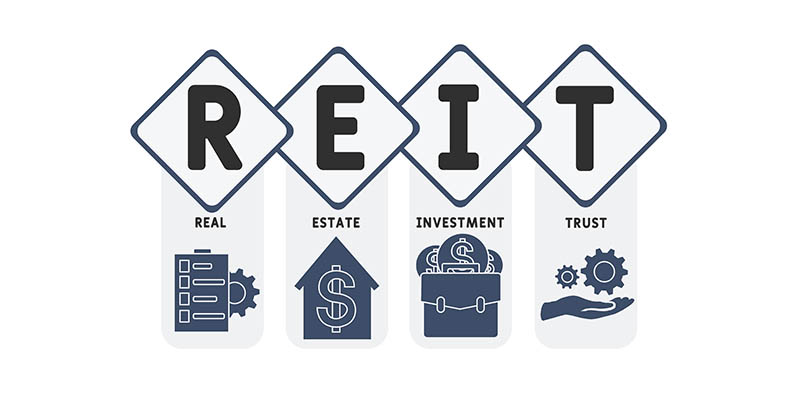Real estate investment trust (REIT) merger and acquisition activity has emerged from the pandemic in full force with some $75 billion in investment nationally from January through mid-July 2021. This robust activity is expected to continue throughout what could potentially be a record-breaking year. While all 11 Global Industry Classification Standard sectors are in positive territory for the year, real estate ranks second highest with a strong 27% performance, just slightly below energy.
With the U.S. economy posting robust growth rates and expectations of a return to pre-COVID normalcy in many areas, investors are readjusting their views on various REIT sectors. Property sectors that felt the deepest impacts in 2020 – office, retail and hotel, or “out-of-favor” sectors – are increasingly eyed by commercial real estate investors, who are betting on a strong rebound. Conversely, tech-driven and industrial REITs – or “in-favor” sectors – that benefited from the country’s increased reliance on e-commerce in 2020, have underperformed so far this year but are still in positive territory.
From February 2020 until the announcement of the efficacy of COVID-19 vaccines in November 2020, tech and industrial REITs outperformed office, retail and hotel sectors by 24%. Since the beginning of 2021, it is now reversed, with the out-of-favor sectors making a comeback and outperforming previously in-favor sectors by over 14%.
After reaching multiyear lows in late 2020 and early 2021, the office and retail sectors’ shares of U.S. commercial real estate transaction volume are moving back to recent historic norms. The office sector is benefiting from a faster-than-expected office re-entry rates in industries such as banking and finance, while pent-up consumer demand and ongoing retail reopenings across the U.S. have eased investor concerns about the long-term health of the retail market.
Additionally, the easing of restrictions and pent-up demand have led to increased spending across all retail categories, propelling retail REITs’ outlook. As a result, office and retail combined to account for 37% of closed transaction volumes in recent months after reaching a low of 26% in early 2021.
The urban core in primary markets is also showing strong signs of improvement, demonstrated by increasing office tour activity. There also has been a shift in subleasing availability as tenants reevaluate their earlier decisions to shed space, with large blocks of sublease space being withdrawn from the market.
The pandemic proved the durability and necessity of the grocery sector. As such, grocery-anchored centers enjoy the lowest vacancy rates of all retail segments. The grocery sector is expected to post record spending levels in 2021 – anticipated to be between 10.5 and 13.5% over 2020 totals. Further evidence of the strength of the grocery sector is highlighted by the IPO of Phillips Edison & Company, representing the largest REIT IPO since 2019, having raised $476 million in the offering.
Capital Issuance
During the height of the lockdowns in second quarter 2020, agency lenders accounted for the largest share of mortgage originations. Today, the composition of lenders has generally normalized to the pre-pandemic composition.
Banks and debt funds are once again the most active lenders, with local, regional and national banks actively quoting both permanent and construction deals. Debt funds continue to be very active across all property types and are increasingly aggressive on value-add transactions.
Over the past few months, spreads for most assets tightened, despite rising Treasurys, with spreads compressing most for industrial assets, while office and retail loans are still pricing somewhat higher. On average, spreads have decreased by 20 basis points since the end of 2020. Lenders also are providing aggressive pricing as they work to reach their 2021 allocation goals. This will provide liquidity and open the door for new investors to enter the market.
REITs have been prolific issuers of new capital. Since February 2020, REITs raised more than $30 billion in equity and more than $90 billion in unsecured debt. What is striking when analyzing the latest issuance data is that the cost of capital across both debt and equity markets has tended to trend downwards in recent months. Though treasury yield is up 40 basis points over the last three months, the spread on issuance of new unsecured REITS bonds has generally been lower. In addition, REIT cost of equity, as measured by offering discount to last close, has been lower for recent issuance as compared to early in the year.
In addition, JLL Research shows significant merger and acquisition activity within the proptech space among special purpose acquisition companies; continued demand for partnerships with platforms, particularly for in the industrial and single-family rental sectors; and a rebound in large portfolio deals across a broad range of assets.
Looking Forward
Despite recent headlines raising concerns over rising interest rates and volatility in the capital markets, REITs have not been adversely affected. In fact, REITs, so far, have been resilient performers. This is not a surprise as we have seen REITs outperform during the last two expansionary period following the dot-com bust in 2001 and then following the global financial crisis in 2009.
Given the favorable cost of capital, REITs today are afforded a green light to grow. This, combined with the significant amount of uninvested funds available across institutional capital sources should bode well for heightened transaction activity in 2021 and beyond.
With the cost of equity and debt for REITs less expensive today than during the pandemic, REITs are in a healthy position to take advantage of markets that are now opening fully across the country.














